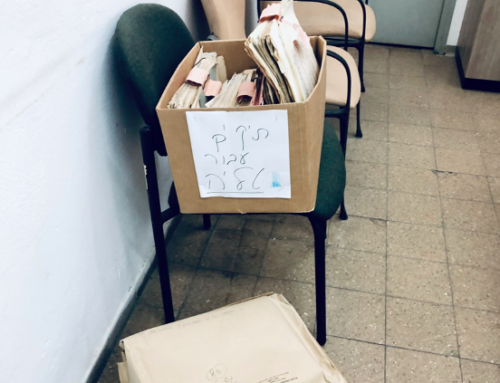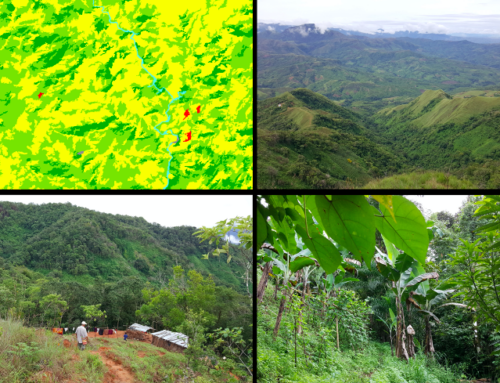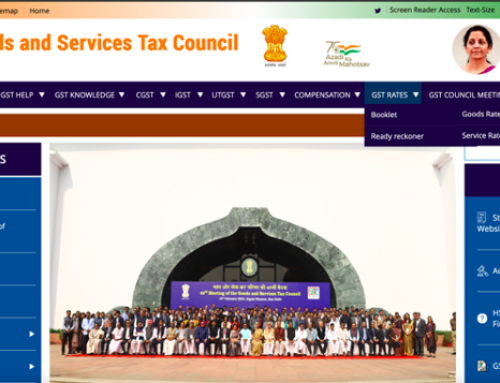
Photo by Arjun MJ on Unsplash
This essay maps two movements of a parcel of land at distinct temporal moments in India’s development history. The first was the independent Indian state’s land reform policy, known as “land to the tiller,” that redistributed surplus private land to landless tillers in villages. The second was the movement of tenancy lands from the tiller towards “public purpose” infrastructure projects and into the hands of the Indian state. The first movement, which took place in the 1950s, vested landless tillers with inalienable rights that then came to be extinguished by the doctrine of eminent domain in the early 2000s. In this essay, I follow Sanjay, who bears documentary proof of his inalienable rights to the land and was on a quest to make legible his contested claim. I show how the lack of knowledge of administrative procedural time, coupled with the proliferation of documents and procedures around a particular parcel of land, reveals emancipatory/regulatory tendencies within bureaucracies and how documents scaffold (or fail to scaffold) ownership. Although it is an uphill task to make a claim on land, there exist numerous administrative and judicial pathways for redressing grievances. These pathways open out multiple fronts for negotiation between state agencies and affected families.
“Hello Madam,” a voice cracked on the telephone. “Can you translate the Court judgment?”
“The Mumbai High Court has dismissed your petition,” I said.
Sanjay asked why.
“Delay and laches,” the judgment stated.
The judicial verdict asked why, if Sanjay had suspected any wrongdoing, had he waited so long to approach the local administration? He was a young adult; his father was alive, and neither of them had raised any objection when the alleged mutation on the land record occurred. Sanjay’s writ petition explained that the provincial government had issued a paauti (payment receipt) to Madho, Sanjay’s great-grandfather, in 1957, recognizing him as a protected tenant.1 During land acquisition in the 1990s, Madho’s nephew had transferred the title and became the owner of the land. Sanjay’s writ petition argued that due to local administrators’ non-compliance of clause 32G2 and 32M3 of the Bombay Tenancy and Agricultural Lands Act (BTAL) 1948 ,4 the transfer of title initiated by the nephew amounted to interference. The judicial bench, however, insisted that due to Sanjay’s delay, the transfer could not now be seen as a case of interference. When we met again, Sanjay asked, “Does this paauti not mean anything?”
Historically, the paauti was the provincial government’s effort to address the deepening crisis in agricultural productivity, stemming from the indebtedness of tenant tillers like Madho. In the present, the activist and lawyer were confident that the paauti was legally significant to protect Sanjay’s claim in perpetuity because it legally identified Madho as a protected tenant and drew its authority from the stringent provisions of the BTAL (1948). The judicial bench verdict, however, reiterated the words of the local land acquisition officer, citing “delay” in administrative procedural time.
Administratively, agrarian relationships in Madho’s times were structured by the Khoti system of double tenure.5 In organizing peasant conferences, mobilizing peasant strikes against the khot’s exploitation, and developing a white paper on small landholdings, Dr. B.R. Ambedkar articulated the economics of landholdings and agricultural productivity by foregrounding the coercive entanglement of labor exploitation and social relations through the figure of the khot.6 These regional processes were generative of land reforms through two post-independence legislations: The BTAL (1948) and the Abolition of khoti tenures (1950). The first legislation redistributed village lands to landless tillers who subsisted on agriculture, and the second terminated the private ownership of the khot across large tracts of land.
BTAL (1948) stipulated that the beneficiary of such land reform was either a tenant or protected tenant who paid a token amount of money to the khot, calculated by the local land records office. With the issuance of the paauti, the ownership rights would transfer to the landless tiller. Madho received the paauti in 1957 as a protected tenant, from whom the land was inalienable, save for the authority of the Collector and any state led industrial project. And yet sixty years later, not only had the paper document degraded with the passage of time, but so too did the force of the welfare state to uphold Sanjay’s right to the land. This decline could be partially traced to the presence of new/old documents, transactive/bureaucratic actors, and regional social mobilization around the tenancy land that had come to be earmarked for the industrial corridor project.
The transactive thrust emerged from outsiders, as well as from local elected leaders involved in the project, creating a micro market in agricultural land in 2006. By 2012, an individual investor was keen to purchase Madho’s two acres of tenancy land. It was only when Sanjay’s paternal cousin in his kin-village, a land agent, informed him that Madho’s land had been purchased that he went to the talati 7 to inquire about any mutation (deletion or entry) on his land records. The talati feigned ignorance about the transaction.
Sanjay had heard rumors that the government was purchasing land for the industrial corridor. By 2013, activists had mobilized anti industrial corridor campaigns across the 78 villages that were to be acquired. Sanjay wondered how these events—and the investor’s presence—would challenge his claim to the land. His position was precarious. At the very least, he hoped he would be able to claim compensation money. The talati had not responded favorably to conducting a site reconnaissance on Sanjay’s land. A neighbor advised him to meet the social activists. On attending the social clinics led by the activists, Sanjay learned that he had to request the talati for a copy of his 7/12 land document each year to check for any mutations to it.
Although Madho was given protected tenant status, he was not informed about the knowledge and labor practices that were required to maintain the government issued document. This illiteracy with government procedural process and documents continued across generations, until the sale of the land intersected with land acquisition and compensation for the industrial corridor project. It is this lateral movement of land away from the vertical branches of kinship and into external hands (i.e., the investor and the state) that prompted Sanjay to familiarize himself with land-related matters related to sale transactions and acquisitions. He also learned at this time how to approach the local administration and judicial system with grievances through written applications.
The office of the talati responded to Sanjay’s request, informing him that his name was not listed in the documents, nor was he indicated as a tenant tilling the land. He filed another application to the talati’s office to conduct a reconnaissance of the field (peek pahani, or “seeing the crop”) to record his tilling activity. There was no response. In 2015, he submitted an application to the tahsildar (Assistant Collector) office. The tahsildar finally organized the reconnaissance, recording oral testimonies from Sanjay, as well as from longtime residents of the village and the elected village council in the presence of the owner, in an attempt to establish Sanjay’s claim. New information surfaced—that Sanjay’s cousin had sold the land, and that it was being acquired for the project. There was no dispute, however, that intergenerationally Sanjay’s family had been tilling the land. The tahsildar made a mutation entry in the land document of the investor (i.e., of Sanjay) as tenant tiller. Sanjay filed reconnaissance applications for three years in a row. By 2018, Sanjay filed an application for recognition as a protected tiller on the land, just as his great-grandfather Madho had been in 1957. The tahsildar’s office accepted this application. An entry was made in the land document officially recognizing his status as “tenant” not “protected tenant.”
With the lawyer’s advice, the investor quickly gave consent for land acquisition by the industrial corridor project. The compensation monies could not be disbursed exclusively to the owner because of Sanjay’s presence as tiller on the land document. The investor objected to this interference on “his” property. He sought recourse from the land acquisition officer, who was in a more powerful position than the tahsildar. The officer studied the investor’s consent documents, as well as Sanjay’s application to stay compensation monies to the investor due to his claim as tenant tiller, and also the investor’s objection to Sanjay’s claim. The official verdict argued that delay on Sanjay’s part in approaching the local administration made him ineligible. The compensation monies would be released to the investor. Sanjay was distraught.
Sanjay subsequently approached the Collector, the state revenue tribunal, the division Commissioner, the state minister for Rural Development, the Member of Legislative Assembly, and even the High court of Mumbai. Each agency echoed the delay verdict, dismissing his appeal. The social activist completed all the official paperwork in each application. A few local lawyers were hired to make substantive arguments to various government agencies. Sanjay’s resources from driving the auto rickshaw barely helped him meet his extended family’s needs. He pawned a gold chain, a gift from his widowed mother-in-law, to fund his writ petition in the High Court in 2022. Six months later, a distraught Sanjay sent me the “dismissed verdict” by WhatsApp.
Courts in India are notorious for inordinate delays. Although Sanjay experienced this administrative waiting game, it abruptly picked up speed when the state government received compensation packages from the national agencies coordinating the industrial corridor project in 2018. The quickened pace of disbursing compensation monies by the local administration disrupted the outcomes Sanjay was seeking, which were first and foremost to be recognized as a protected tenant like Madho, and if this was not possible, at the very least to receive compensation. Although inordinate delays might have extended Sanjay’s uncertainty, they also might have (albeit precariously) maintained for him and his allies the possibility that his claims might be elaborated via different pathways that were opened due to evolving provisions in administrative law. The acceleration of grievance redressal mechanisms without wiggle room for claimants had the effect of foreclosing the possibility that Sanjay’s claim to “his” land could be recognized.
Notes
[1] The BTAL (1948) advocated for the compulsory transfer of ownership rights to the tiller. Such land was heritable, but unalienable and impartible tenure. A protected tenant was defined as a person who held the land continuously for a period of six years before the advent of the BTAL (1948), and who personally cultivated the land. A tenant was defined as a person cultivating someone else’s land and not a family member, hired laborer, or mortgagee in possession of the land.
[2] 32G is concerned with procedural process in case of transfer of land title, issuing notices and determining price of land to be paid by tenants in the BTAL (1948).
[3] 32M is concerned with procedural process in case of purchase of lands in the BTAL (1948).
[4] The Bombay Tenancy Act (1939), precursor to the BTAL Act (1948), was a legal remedy that emerged from provincial discussions after the peasant uprising in Telangana that compelled the Indian National Congress to appoint a land committee. A key recommendation was the ‘land to the tiller policy’ as it focused on peasant proprietorship, abolition of intermediaries between colonial government and peasants, and fixation of land revenue. Dr. B.R. Ambedkar documented the ground realities of agrarian land relations i.e., khoti tenure, in Kolaba district in the early 20th century.
[5] The khot was appointed during Mughal times to collect and pay revenues and in return, he acquired the rights to lease lands. Khots emerged as powerful intermediaries and usurious landlords who extracted forced unpaid labor from the lower castes in the village order.
[6] The Chari Satyagraha of 1927, located not far from where Madho lived, under the leadership of Ambedkar, mobilized landless laborers and tenant cultivators to strike work in the fields and homes of khots to politically mobilize the unorganized tenant cultivators and landless laborers against the exploitation of khots and moneylenders.
[7] The talati, the village level official responsible for maintaining land records, agricultural records, and collecting taxes, issued a payment receipt, the paauti.
References
Dharmadhikari, Chandrakant.1999. The Struggle against Khoti. Bengaluru: Ma—Le Prakashana.
Deshpande, R. S. 2002. “Land Reforms and Agrarian Structure in Maharashtra.” In Land Reforms in India Vol. 8, Performance and Challenges in Gujarat and Maharashtra, edited by Ghanshyam Shah and DC Shah, 95-126. New Delhi: Sage.
Benita Menezes is a PhD candidate in the Department of Anthropology, Johns Hopkins University. Her dissertation, The Politics of Dispossession: Law, Kinship Disputes and Collective Action in Rural India, examines the intersection of infrastructure projects, kinship and social mobilization, in agrarian economies, to ask how new forms of political and economic reasoning emerge in the rush for land in India’s urban transition. Benita has a Bachelors in Architecture, University of Mumbai, India and Master of Arts in Urban Planning from the University of British Columbia, Canada. She has taught at the undergraduate level in architecture (Mumbai) and anthropology (Baltimore). She has experimented with multimedia as a pedagogical tool in developing educational experiences for underprivileged children in rural India. She has been actively involved in community-based research and policy projects focused on heritage conservation, environmental management, and urban activism in the Mumbai Metropolitan Region.
Cite As: Menezes, Benita. 2023. “Multifarious Land, Contesting Claims” In “data/Big Data in the field” edited by Naveeda Khan, American Ethnologist website, December 22 2023, [https://americanethnologist.org/data-big-data-in-the-field/multifarious-land-contesting-claims/]




